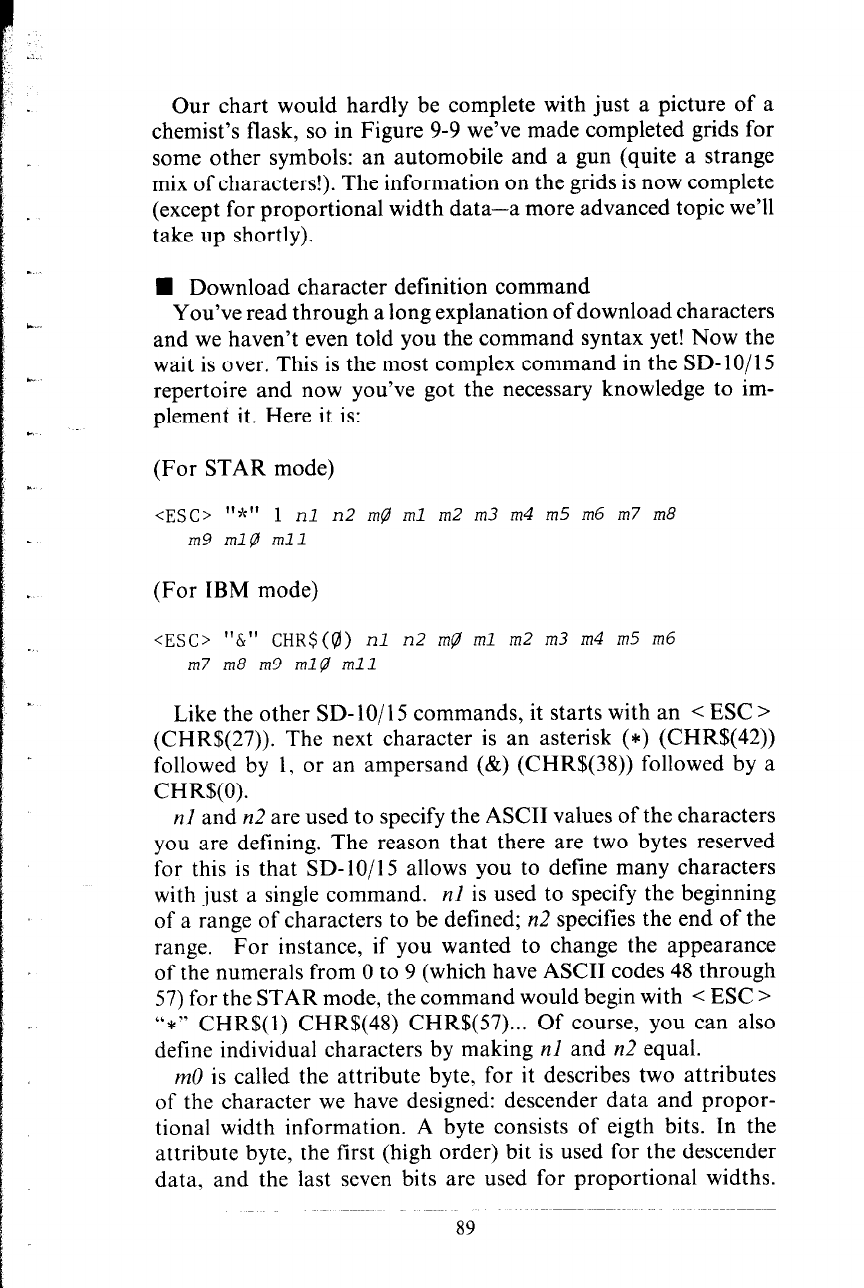
Our chart would hardly be complete with just a picture of a
chemist’s flask, so in Figure 9-9 we’ve made completed grids for
some other symbols: an automobile and a gun (quite a strange
mix of characters!). The information on the grids is now complete
(except for proportional width data-a more advanced topic we’ll
take up shortly).
.
n Download character definition command
You’ve read through a long explanation of download characters
and we haven’t even told you the command syntax yet! Now the
wait is over. This is the most complex command in the SD-lo/15
repertoire and now you’ve got the necessary knowledge to im-
plement it. Here it is:
I.
L
(For STAR mode)
<ESC>
"~~" 1 nl n2 rn@ ml m2 m3 m4 m5 m6 m7 m8
m9 ml@ ml1
.
(For IBM mode)
<ESC>
"6" CHR$(Q)) nl n2 rng ml m2 m3 m4 m5 m6
m7 m8 m9 ml0 ml1
Like the other SD-lo/l5 commands, it starts with an < ESC >
(CHR$(27)). The next character is an asterisk (*) (CHR$(42))
followed by 1, or an ampersand (6~) (CHR$(38)) followed by a
CHR$(O).
nl and n2 are used to specify the ASCII values of the characters
you are defining. The reason that there are two bytes reserved
for this is that SD-lo/l 5 allows you to define many characters
with just a single command. nl is used to specify the beginning
of a range of characters to be defined; n2 specifies the end of the
range.
For instance, if you wanted to change the appearance
of the numerals from 0 to 9 (which have ASCII codes 48 through
57) for the STAR mode, the command would begin with < ESC >
‘I*” CHR$(l) CHR$(48) CHR$(57)... Of course, you can also
define individual characters by making nl and n2 equal.
mCJ is called the attribute byte, for it describes two attributes
of the character we have designed: descender data and propor-
tional width information. A byte consists of eigth bits. In the
attribute byte, the first (high order) bit is used for the descender
data, and the last seven bits are used for proportional widths.
89


















